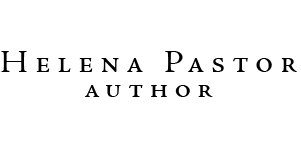Hello again. It’s spring in Armidale, and I’ve just returned from a fabulous annual writing retreat at the coast with my dear friend, Edwina Shaw. We both brought full manuscripts to be edited and checked over, and although Edwina and I spent many hours sitting on the veranda of our cabin reading and making corrections on each other’s work, we still managed to walk along the beach and swim in the surf and eat delicious food and drink beer and laugh long into the night and sing ‘Speed Bonnie Boat’ and light a candle for Helen Greaney, a beautiful 93-year-old woman who died last week (and we even had time to debate Hemingway’s use of ‘and’ in lengthy sentences). And the best thing is that when Edwina finished reading the completed draft of my memoir – yes, you read that right: the completed draft – she thought the new narrative structure worked really well. Hooray! Edwina thinks I still need to do a little cutting and ‘rejigging’, but the final HarperCollins-submission-ready-draft is rapidly approaching.
A huge motivation to finish the memoir came my way in early September, when I heard that Heather Taylor Johnson – one of the other Varuna HarperCollins Award winners – had her manuscript accepted by HarperCollins. It took ten months for the team to reach a decision, but it was well worth the wait because Heather’s book is going to be published in Australia and probably in America as well. Heather is so happy. She’d just gotten off the phone with her editor when she sent the news through, and after I forwarded my congratulations, I thought to myself: ‘I want that feeling, too, but it’s never going to happen if I don’t finish this draft.’ So I did it. I worked like a madwoman to get it done before the 20th September (the final deadline I set for myself), and posted the manuscript to my ASA mentor, Judith Lukin-Amundsen, with a great sigh of relief. Judith has two other manuscripts to edit before she can look at mine, so it may be a while before I receive her feedback, but she was so pleased that I’d finished and said: ‘You can be thrilled, Helena, to have brought yourself out the other end of this draft.’
I am thrilled.
Life has responded accordingly. Since I sent the manuscript to Judith (and escaped from the confines of my writing area), the world has opened up before me. First of all, a washing machine unexpectedly arrived into my life, just as my old Simpson spun its last load. Then, last week, I heard I won a Varuna Fellowship for my next project – ‘The Bakery Stories’ – a novella which explores the story of the Dutch Jews during World War II. I’ve been working on ‘The Bakery Stories’ on and off for about five years now (as a way to build up a publication record) and it’s such an affirmative ‘Yes!’ to be awarded the fellowship to further develop this project.
Fired up by these positive signs, and strangely energised after finishing the memoir, I developed an idea for a future writer-in-residence position with a local youth organisation. The possibilities of this project are so exciting they just about keep me awake at night, but because I need funding, I had to quickly pull together a Country Arts Support Program (CASP) Application. I sent it away just in time to meet the submission deadline, and will hear whether my application was successful in November.
Also, while still intoxicated by the potential of this writer-in-residence idea (and flying high about the Varuna win), I ran into a friend – another PhD student – on the path outside Dixson library at UNE. I’d seen this same friend in the lingerie shop in town the week before, when I was buying a new bra to celebrate finishing the draft, but it wasn’t really the place to have an in-depth discussion about our studies. This time I had a pile of books under my arm – like a proper post-graduate student – so we stopped to chat. I excitedly told my friend about finishing the memoir and about my writer-in-residence idea, and then I showed her the books I’d just borrowed – titles by Tom Wolfe and Jack Kerouac and Hunter S. Thompson – and we talked about the legacy of the New Journalists, and it was all so exciting I could barely contain myself, even though I was aware of raving and perhaps coming across as just a little manic. But my friend was beaming with excitement, too. ‘It’s all so perfect!’ she enthused at one point. She also suggested that my idea could be incorporated into my exegesis, which caused me to remember that I have to write my exegesis very quickly if I am to make 2012 my ‘Year of Completion’ – but even finishing my PhD felt like a cinch that day.
As we said our farewells, I remembered my Varuna news and told my friend about the fellowship. ‘Oh Helena!’ she said, her eyes shining. ‘You’re a writer … a real writer!’ And I looked at her and thought, ‘Yes, I am!’ After nearly nine years, I am finally ready to admit to myself – and to the world – that I am a writer!
And the possibilities of life suddenly seem endless.
